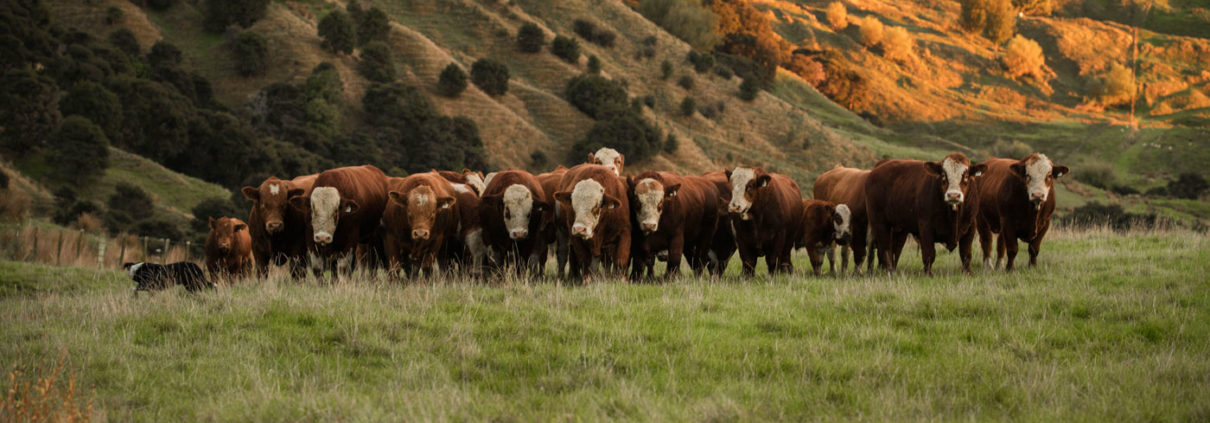
EBV’s Explained
EBVs are the estimated breeding values of a sire or dams offspring and are used to compare animals across herd within the same breed. They are explained in more detail below.
An animal’s breeding value is its genetic merit, half of which will be passed on to its progeny. While we will never know the exact breeding value, for performance traits it is possible to make good estimates. These estimates are called Estimated Breeding Values (EBVs).
In the calculation of EBVs, the performance of individual animals within a contemporary group is directly compared to the average of other animals in that group. A contemporary group consists of animals of the same sex and age class within a herd, run under the same management conditions and treated equally. Indirect comparisons are made between animals reared in different contemporary groups, through the use of pedigree links between the groups.
EBVs are expressed in the units of measurement for each particular trait. They are shown as + ive or – ive differences between an individual animal’s genetics difference and the genetic base to which the animal is compared. For example, a bull with an EBV of +50kg for 600-day weight is estimated to have genetic merit 50kg above the breed base of 0kg. Since the breed base is set to an historical benchmark, the average EBVs of animals in each year drop has changed over time as a result of genetic progress within the breed.
The absolute value of any EBV is not critical, but rather the differences in EBVs between animals. Particular animals should be viewed as being “above or below breed average” for a particular trait.
While EBVs provide the best basis for comparing the genetic merit of animals reared in different environments and management conditions, they can only be used to compare animals analysed within the same analysis. Consequently, Simmental BREEDPLAN EBVs can’t be validly compared with EBVs for any other breed.
EBVs are published for a range of traits covering fertility, calving ease, milking ability, growth, and carcass merit. When using EBVs to help with selection decisions it’s important to have a balance between the different groups of traits and to emphasise those traits that are important to the particular herd, markets and environment. One of the advantages of having a comprehensive range of EBVs is that it’s possible to avoid extremes in particular traits and select for animals with balanced overall performance.
Calving Ease EBVs (%) are based on calving difficulty scores, birth weights and gestation length information. More positive EBVs are favourable and indicate easier calving.
- CE % Dir= Direct Calving Ease – The EBV for direct calving ease indicates the influence of the sire on calving ease in purebred females calving at two years of age.
- CE % Daughters= Daughters’ Calving Ease – The EBV for daughters’ calving ease indicates how easily that sire’s daughters will calve at two years of age. Gestation Length EBV (days) is an estimate of the time from conception to the birth of the calf and is based on artificial insemination and hand mating records. Lower (negative) Gestation Length EBVs indicate shorter gestation length and easier calving and increased growth after birth.
Birth Weight EBV (kg) is based on the measured birth weight of progeny, adjusted for dam age. The lower the value the lighter the calf at birth and the lower the likelihood of a difficult birth. This is particularly important when selecting sires for use over heifers.
200-Day Growth EBV (kg) is calculated from the weight of progeny taken between 80 and 300 days of age. Values are adjusted to 200 days and for age of dam. This EBV is the best single estimate of an animal’s genetic merit for growth to early ages.
400-Day Weight EBV (kg) is calculated from the weight of progeny taken between 301 and 500 days of age, adjusted to 400 days and for age of dam. This EBV is the best single estimate of an animal’s genetic merit for yearling weight.
600-Day Weight EBV (kg) is calculated from the weight of progeny taken between 501 and 900 days of age, adjusted to 600 days and for age of dam. This EBV is the best single estimate of an animal’s genetic merit for growth beyond yearling age.
Mature Cow Weight EBV (kg) is based on the cow weight when the calf is weighed for weaning, adjusted to five years of age. This EBV is an estimate of the genetic difference in cow weight at five years of age and is an indicator of growth at later ages and potential feed maintenance requirements of the females in the breeding herd. Steer breeders wishing to grow animals out to a larger weight may also use the Mature Cow Weight EBV.
Milk EBV (kg) is an estimate of an animal’s milking ability. For sires, this EBV indicates the effect of the daughter’s milking ability, inherited from the sire, on the 200-day weights of her calves. For dams, it indicates her milking ability.
Scrotal Size EBV (cm) is calculated from the circumference of the scrotum taken between 300 and 700 days of age and adjusted to 400 days of age. This EBV is an estimate of an animal’s genetic merit for scrotal size. There is also a small negative correlation with age of puberty in female progeny and therefore selection for increased scrotal size will result in reduced age at calving of female progeny.
Days to Calving EBV (days) indicates the fertility of the daughters of the sire. It is the time interval between the day when the female is first exposed to a bull in a paddock mating to the day when she subsequently calves. A negative EBV for days to calving indicates a shorter interval from bull-in date to calving and therefore higher fertility.
Carcase Weight EBV (kg) is based on abattoir carcass records and is an indicator of the genetic differences in carcass weight at the standard age of 650 days.
Eye Muscle Area EBV (sq cm) is calculated from measurements from live animal ultrasound scans and from abattoir carcass data, adjusted to a standard 300kg carcass. This EBV estimates genetic differences in eye muscle area at the 12/13 rib site of a 300kg dressed carcase. More positive EBVs indicate better muscling on animals. Sires with relatively higher Eye Muscle Area EBVs are expected to produce better muscled and higher percentage yielding progeny at the same carcass weight than sires with lower Eye Muscle Area EBVs.
Rib Fat and Rump Fat EBVs (mm) are calculated from measurements of subcutaneous fat depth at the 12/13 rib site and the P8 rump site (from live animal ultrasound scans and from abattoir carcases) and are adjusted to a standard 300kg carcass. These EBVs are indicators of the genetic differences in fat distribution on a standard 300kg carcass. Sires with low, or negative, fat EBVs are expected to produce leaner progeny at any particular carcass weight than sires with higher EBVs.
Retail Beef Yield EBV (%) indicates genetic differences between animals for retail yield percentage in a standard 300kg carcass. Sires with larger EBVs are expected to produce progeny with higher-yielding carcasses.
Intramuscular Fat EBV (%) is an estimate of the genetic difference in the percentage of intramuscular fat (marbling) at the 12/13 rib site in a 300kg carcass. Depending on market targets, larger more positive values are generally more favourable.
Docility EBV (%) is an estimate of the genetic differences between animals in temperament. Docility EBVs are expressed as differences in the percentage of progeny that will be scored with acceptable temperament (ie. either “docile” or “restless”).
